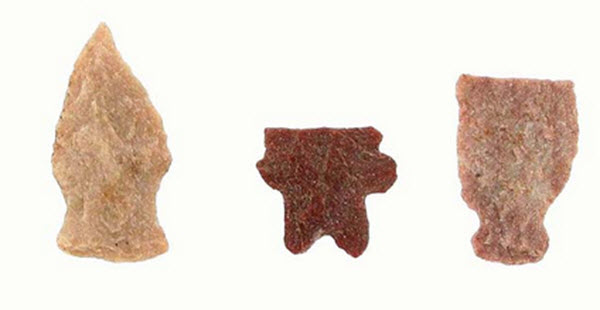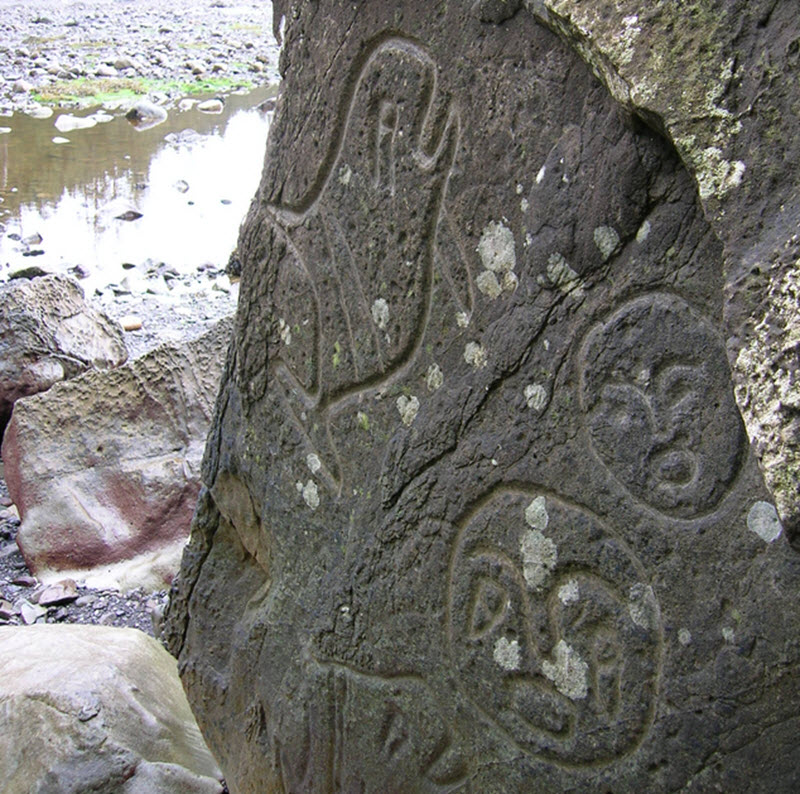Archaeological evidence indicate that the Pacific Northwest, including the region that is now Washington State, was one of the early places in North America where humans arrived and settled down.
Across Washington State, archaeologists have found 13,000 year old human bones. The Olympic Peninsula in the westernmost part of the state have had humans living there for at least 11,000 years.

Before the arrival of the Europeans
Anthropologists estimate that approximately 125 tribes existed here before the arrival of Europeans. Among these tribes, roughly 50 different languages and dialects were spoken.
The tribes inhabiting the coastal areas throughout the Puget Sound depended heavily salmon, halibut, whale, and shellfish. Cedar was an important tree that they used for a variety of things, including building longhouses and making canoes, and the bark was used to make clothing. Examples of tribes that lived in this region are Makah, Chinook, Quinault, Lummi, Quileute, and Snohomish.
For the tribes that lived along the Columbia River, salmon was a very important food source. Trading was typically carried out by women, while the men were responsible for warfare and captive-taking.
The eastern tribes, also known as the Plateau tribes, lived off hunting, fishing and gathering. Examples of Plateau tribes are Wenatchee, Yakama, Okanoga, Palouse, Niimíipuu, Klickitat, Cayuse, and Spokane.
The Native American village near Ozette

One of the most well-preserved of the Native American archaeological sites in Washington State is found near Ozette on the Olympic Peninsula. Here, part of a village of Ozette Makah people was covered in a mudslide around the year 1560, a horrible catastrophe that instantly preserved the village for posterity in a way similar to what happened to Pompeii in Europe. The approximate year of the mudslide has been determined using radiocarbon dating.
The mudslide occurred before Europeans became common in the area, and before European diseases such as smallpox and measles had decimated the native population. Archaeological research has been able to show us how everyday life was lived here. The mud didn’t just create a “time capsule”, it also preserved the site from looting.
The excavation
In 1966-1967, Richard Daugherty excavated archaeological test pits here, but at that point very little was known about the site. In February 1970, a storm and subsequent tidal erosion exposed several hundred exceptionally well-preserved wooden artifacts, giving archaeologists and historians a clue about how special this site is. It could also be connected to the oral history of the Makah, which includes references to a great slide that covered a part of Ozette.
Soon, an excavation was launched, where students and archaeologists from Washington State University worked together with the Makah. To remove the mud, pressurized water was used. Eventually, six long houses was unearthed, and over 55,000 artifacts were found over the course of 11 years, spanning a period of occupation around 2,000 years.
Artifacts
The found artifacts represents many different activities, including fishing and hunting. The inhabitants of the village used, among other things, knives, bows and arrows. They hunted whales and seals and fished for salmon and halibut.
The knifes have blades made from many different materials, including iron, mussel shells and sharpened beaver teeth. As far as we know, the Makah did not mine iron, but iron might have reached them on drifting shipwrecks from Asia.
Finding wooden items is rare at archaeological sites since wood decays rather quickly under normal circumstances, but the mud preserved the wooden objects at this site and roughly 30,000 wooden objects have been unearthed here.
The Makah Museum
Many of the artifacts from the excavation site can be seen at the Makah Museum at the Makah Cultural and Research Center in Neah Bay. This museum, which was opened in 1979, displays not only genuine artifacts but also replicas of cedar long houses.